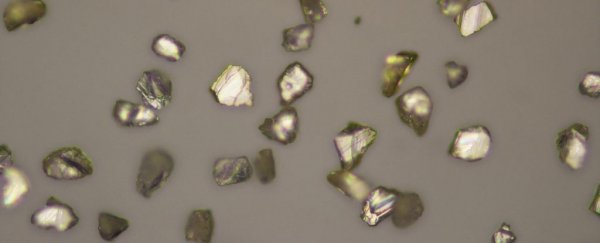They say diamonds are forever, but while 'forever' remains to be seen, they could certainly one day help people fighting cancer live longer lives, thanks to new Australian research.
Physicists at the University of Sydney have developed a way of using synthetic nano-diamonds to track and combat early-stage cancers before they become life-threatening.
"We knew nano-diamonds were of interest for delivering drugs during chemotherapy because they are largely non-toxic and non-reactive," said one of the team, David Reilly.
"We thought we could build on these non-toxic properties, realising that diamonds have magnetic characteristics enabling them to act as beacons in MRIs. We effectively turned a pharmaceutical problem into a physics problem."
While cancer-targeting medications have existed for some time, it's difficult for doctors to know where exactly in a patient's body the treatment is taking place – short of conducting invasive biopsies, which have a number of limitations.
The nano-diamonds solve that problem, having been specially treated so that they're readily visible in Magnetic Resonance Imaging ( MRI) scans. The synthetic stones have been hyperpolarised, effectively turning them into little beacons that give away their location during a scan.
By itself that might not be too helpful, but once the nano-diamonds are fused to specialised cancer-finding medications, the tables are turned.
"By attaching hyperpolarised diamonds to molecules targeting cancers the technique can allow tracking of the molecules' movement in the body," said Ewa Rej, lead author.
In other words, once the double whammy of diamonds and drugs is injected into the body, you've effectively got a 'search and destroy' medication that reveals where cancer is – and all without needing patients to go under the knife.
The next step for the researchers is to team up with medical researchers and try the nano-diamonds on mice, with the hope that ultimately the treatment could help fight human cancers that prove difficult to detect in early stages, including brain cancer and pancreatic cancer.
"This is a great example of how quantum physics research tackles real-world problems, in this case opening the way for us to image and target cancers long before they become life-threatening," said Reilly.
The research is published in Nature Communications.
